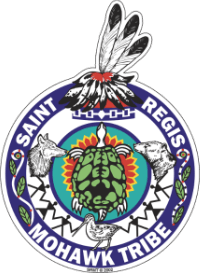5.02.060 Designated Uses
(a) Primary Contact Recreation and Ceremonial Use.
Primary contact recreation and ceremonial use means the use of a stream, river, or impoundment involving the following: prolonged contact and the risk of ingesting water in quantities sufficient to pose a health hazard (including but not limited to swimming, skin diving and water skiing) or religious, cultural, and traditional activities of the members of the Saint Regis Mohawk Tribe and Mohawk Council of Akwesasne, or citizens of the Mohawk Nation Council of Chiefs (including but not limited to collection of medicinal plants and collection of water for ceremonial use).
Standards specific to the use are as follows:
(1) The open water shall be free from algae in concentrations causing nuisance conditions, or gastrointestinal illness or skin disorders.
(2) E. coli. Levels shall not exceed a 30-day geometric mean of 126 per 100 ml, nor shall more than 10 percent of the samples collected in the same 30 days exceed 410 CFU/100 ml.
Table 1. Designated Uses
The Designated Uses described herein shall not be used to limit any treaty right of the Saint Regis Mohawks or Mohawk Nation Council of Chiefs.
Below is a list of Designated Uses for the three major rivers within the boundaries of the Saint Regis Indian Reservation and are presented here to give examples of current Tribal uses specific to each water body. The water bodies are classified as follows: St Lawrence River, Class A-S; Raquette River, Class B; and St. Regis River, Class B. This is not intended to be exhaustive list of uses for these water bodies.
| Designated use | St. Lawrence (Class A-S) | St. Regis (Class B) | Raquette (Class B) | |
| 1 | Domestic, municipal water supply | X | X*[GB1] | |
| 2 | Agricultural or farm water supply | X | X | |
| 3 | Primary Contact Recreation | X | X | X |
| 4 | Ceremonial and cultural use | X | X | X |
| 5 | Medicinal plant collection | X | X | X |
| 6 | Fish and aquatic life use | X | X | X |
| 7 | Cold Water Fishery | X | X | X |
| 8 | Fish Consumption | X | X | X |
| 9 | Navigation | X | X | X |
* It is estimated that during times of peak flow the Raquette River mixes with the St Lawrence at the point of intake for the SRMT drinking water treatment plant and provides a maximum contribution of approximately 15% to the SRMT drinking water intake. Under normal flow conditions it is estimated that this contribution is reduced to between 0% and 2% of daily intake.
** Subsistence fish consumption has been an ongoing practice; however, the current WQ does not does not support this use for all individuals. Women of child bearing age and children are advised to restrict consumption to certain species and reduced quantities (fewer than 8, 4 oz. portions per month). SRMT currently defines subsistence fishing as consuming locally caught fish at a daily average rate of 150g/dy or 40 portions per month.
